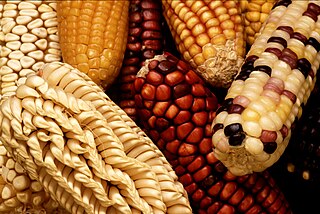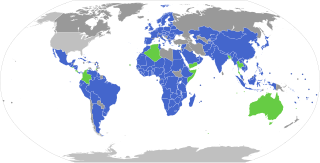
The Convention on Biological Diversity (CBD), known informally as the Biodiversity Convention, is a multilateral treaty. The Convention has three main goals: the conservation of biological diversity ; the sustainable use of its components; and the fair and equitable sharing of benefits arising from genetic resources. Its objective is to develop national strategies for the conservation and sustainable use of biological diversity, and it is often seen as the key document regarding sustainable development.

Biodiversity plays an essential role in the global economy. This includes its role in providing ecosystem services - the benefits that humans get from ecosystems. Biodiversity plays a major role in the productivity and functioning of ecosystems, affects their ability to provide ecosystem services. For example, biodiversity is a source of food, medication, and materials used in industry. Recreation and tourism are also examples of human economic activities that rely on these benefits. In 2018, the WWF Living Planet Report estimated that ecosystem services, underpinned by biodiversity, contributed US$125 trillion a year to the global economy.
This is an index of conservation topics. It is an alphabetical index of articles relating to conservation biology and conservation of the natural environment.
The International Treaty on Plant Genetic Resources for Food and Agriculture is a comprehensive international agreement in harmony with the Convention on Biological Diversity, which aims at guaranteeing food security through the conservation, exchange and sustainable use of the world's plant genetic resources for food and agriculture (PGRFA), the fair and equitable benefit sharing arising from its use, as well as the recognition of farmers' rights. It was signed in 2001 in Madrid, and entered into force on 29 June 2004.

Ex situ conservation is the process of protecting an endangered species, variety, or breed of plant or animal outside its natural habitat. For example, by removing part of the population from a threatened habitat and placing it in a new location, an artificial environment which is similar to the natural habitat of the respective animal and within the care of humans, such as a zoological park or wildlife sanctuary. The degree to which humans control or modify the natural dynamics of the managed population varies widely, and this may include alteration of living environments, reproductive patterns, access to resources, and protection from predation and mortality.
The following outline is provided as an overview of and topical guide to sustainable agriculture:

Agricultural biodiversity or agrobiodiversity is a subset of general biodiversity pertaining to agriculture. It can be defined as "the variety and variability of animals, plants and micro-organisms at the genetic, species and ecosystem levels that sustain the ecosystem structures, functions and processes in and around production systems, and that provide food and non-food agricultural products.” It is managed by farmers, pastoralists, fishers and forest dwellers, agrobiodiversity provides stability, adaptability and resilience and constitutes a key element of the livelihood strategies of rural communities throughout the world. Agrobiodiversity is central to sustainable food systems and sustainable diets. The use of agricultural biodiversity can contribute to food security, nutrition security, and livelihood security, and it is critical for climate adaptation and climate mitigation.

Germplasm refers to genetic resources such as seeds, tissues, and DNA sequences that are maintained for the purpose of animal and plant breeding, conservation efforts, agriculture, and other research uses. These resources may take the form of seed collections stored in seed banks, trees growing in nurseries, animal breeding lines maintained in animal breeding programs or gene banks. Germplasm collections can range from collections of wild species to elite, domesticated breeding lines that have undergone extensive human selection. Germplasm collection is important for the maintenance of biological diversity, food security, and conservation efforts.
Biointensive agriculture is an organic agricultural system that focuses on achieving maximum yields from a minimum area of land, while simultaneously increasing biodiversity and sustaining the soil fertility. The goal of the method is long term sustainability on a closed system basis. It is particularly effective for backyard gardeners and smallholder farmers in developing countries, and also has been used successfully on small-scale commercial farms.

A gene bank is a type of biorepository that is designed around the preservation of genetic information. Gene banks are often used for storing the genetic material of species that are endangered or close to extinction. They are also used for the preservation of major crop species and cultivars, in order to preserve crop diversity.
Crop diversity or crop biodiversity is the variety and variability of crops, plants used in agriculture, including their genetic and phenotypic characteristics. It is a subset of a specific element of agricultural biodiversity. Over the past 50 years, there has been a major decline in two components of crop diversity; genetic diversity within each crop and the number of species commonly grown.
Forest genetic resources or foresttree genetic resources are genetic resources of forest shrub and tree species. Forest genetic resources are essential for forest-depending communities who rely for a substantial part of their livelihoods on timber and non-timber forest products for food security, domestic use and income generation. These resources are also the basis for large-scale wood production in planted forests to satisfy the worldwide need for timber and paper. Genetic resources of several important timber, fruit and other non-timber tree species are conserved ex situ in genebanks or maintained in field collections. Nevertheless, in situ conservation in forests and on farms is in the case of most tree species the most important measure to protect their genetic resources.
Livestock Keepers' Rights are a bundle of rights that would support the survival of small-scale livestock keepers such as pastoralists, smallholders and family farms in a general policy environment that favours large-scale industrial modes of livestock production. In the context of the current anti-livestock agenda and the claim by commercial interests that livestock will be eliminated by 2035, they are gaining added traction.

The Nagoya Protocol on Access to Genetic Resources and the Fair and Equitable Sharing of Benefits Arising from their Utilization to the Convention on Biological Diversity, also known as the Nagoya Protocol on Access and Benefit Sharing (ABS), is a 2010 supplementary agreement to the 1992 Convention on Biological Diversity (CBD). Its aim is the implementation of one of the three objectives of the CBD: the fair and equitable sharing of benefits arising out of the utilization of genetic resources, thereby contributing to the conservation and sustainable use of biodiversity. It sets out obligations for its contracting parties to take measures in relation to access to genetic resources, benefit-sharing and compliance.

This is a list of topics in biodiversity.
The Nordic Genetic Resource Center is a plant, farm animal and forest conservation, gene resource guardian, and sustainable use organization under and primarily financed by the Nordic Council of Ministers, and is headquartered in Alnarp, near Malmö, in southern Sweden. NordGen's primary mission is "securing the broad diversity of genetic resources linked to food and agriculture" through "conservation and sustainable use, solid documentation and information work and international agreements".

Animal genetic resources for food and agriculture (AnGR), also known as farm animal genetic resources or livestock biodiversity, are genetic resources of avian and mammalian species, which are used for food and agriculture purposes. AnGR is a subset of and a specific element of agricultural biodiversity.

Plant genetic resources describe the variability within plants that comes from human and natural selection over millennia. Their intrinsic value mainly concerns agricultural crops.
The Commission on Genetic Resources for Food and Agriculture of the Food and Agriculture Organization of the United Nations (FAO) is an intergovernmental body that addresses issues specifically related to the management of biodiversity of relevance to food and agriculture. It was established in 1983 as the Commission on Plant Genetic Resources for Food and Agriculture. In 1995, the mandate of the Commission was extended to cover all components of biodiversity for food and agriculture and its name was changed to its current version. Its membership comprises 179 countries and the European Union.
Genetic resources means genetic material of actual or potential value where genetic material means any material of plant, animal, microbial or other origin containing functional units of heredity... Genetic resources thus refer to the part of genetic diversity that has or could have practical use, such as in plant breeding. The term was introduced by Otto Frankel and Erna Bennett for a technical conference on the exploration, utilization and conservation of plant genetic resources, organized by the Food and Agriculture Organisation (FAO) and the International Biological Program (IBP), held in Rome, Italy, 18–26 September 1967.









